
Porcelain vs. Ceramic Tile: Learn the Difference
Learn the main differences between ceramic and porcelain tile in our porcelain vs ceramic tile guide: porcelain is impermeable to water, and unglazed ceramic is not; porcelain is made of a harder material, while ceramic is softer; porcelain can have more body color options, while ceramic comes in natural clay colors like red or brown.
If you’re not overly familiar with the flooring industry, the subject of tiles might be pretty confusing. After all, both porcelain and ceramic tiles look stunningly alike! I mean, both porcelain and ceramic tiles are created using the same elements- clay, sand and water. Yet, you’ll find that both of these products can be very different.
Both ceramic and porcelain tile have been around for a long time, but with new technology available, gone are the days of tan square tiles. Lately, there’s been an emergence of ceramic and porcelain planks, wood-look tiles and more.
Are you ready to learn more about these products in-depth? I’ll explain how both ceramic and porcelain tiles are constructed, go over their strengths and weaknesses and give you all the info you need to make your decision easier.
Related Content >> Floor Tile Buying Guide
What is Porcelain Tile?
Porcelain tile is made from a dense (feldspar enriched) clay and fired at a higher kiln temperature to create a denser, more durable tile than ceramic. It’s known to be exceptionally impermeable to water.
There’s been quite a bit of dispute in the tile community about what “counts” as porcelain tile, but the consensus from the Porcelain Tile Certification Agency (PTCA) is that tile manufacturers must send in five porcelain samples to prove that they absorb less than 0.5% of water. Porcelain tile certified by this agency is the most authentic porcelain you can buy on the market.
If you’d like to confirm your porcelain tile is up to the standards of real porcelain, check for the PTCA logo on the box, or search their database.
The good news is that one of our main porcelain manufacturers, Daltile, is on the list.
Related Content >> How to Clean Tile Floors
Construction of Porcelain Tile
Porcelain is created using fused clay minerals and water. The clay is often comprised of feldspar, kaolin, and quartz. This combination of clay and the higher pressure during construction makes porcelain denser than ceramic clays.
After a dryer removes some excess moisture, the tile is then pressed into shape and left to dry on a rack. At this point of time, these tiles are called “green tile” or “greenware.” That’s because the tile has yet to be fired or glazed.
After porcelain tile has been dried, a high-tech inkjet printer will add the desired colors and pattern. It’ll also be glazed to protect this image from wear and tear. Porcelain can also be left unglazed.
Last, porcelain is fired at an extremely high 2500F, which is 500F higher than ceramic. This temperature both sets the glaze and bakes out the remaining moisture, creating an impermeable surface.
Related content >> Tile Flooring Trends
Pros of Porcelain Tile
- Density: Porcelain tile is created using dense clay and minerals that are then molded under extreme pressure. Basically, it means they’re super dense now.
- Hardness: Porcelain tile is harder than ceramic tile and less prone to chips. If the tile is glazed, check out the PEI rating as well.
- Great for High-Moisture Areas: Porcelain tile is impermeable to water, so you don’t have to worry about subfloor damage from water, or mold growth.
- Outdoor Use: Since porcelain is frost-proof, unlike ceramic, it can be used outside.
- Maintenance: Porcelain is easy to clean and maintain. All you need is a broom or vacuum and damp mop. However, keep in mind that grout should be resealed every few years.
- Through-Color: Porcelain has the option of through color that ceramic often doesn’t. That means the body of the tile is the same color as the surface.
- Great for Resale: Porcelain will definitely up your resale value, especially wood-look tile which is trending right now.
Cons of Porcelain Tile
- Cost: Porcelain is the more expensive of the ceramic tiles. However, it does last the longest.
- Authenticity: Porcelain has rigorous testing and certifications. You’ll want to make sure the porcelain you’re buying is actually porcelain.
- Difficult DIY Cutting: Porcelain isn’t a DIY-friendly material, as it requires a wet saw to cut properly.
Recommended Uses for Porcelain Tile
- Showers, Backsplash, and other “Wet” Areas
- Outdoor Applications
- High-Traffic Tile Flooring
Related Content >> Wall Tile Buying Guide
What is Ceramic Tile?
Ceramic tile is made from a majority clay, mineral and water solution that is then pressed into a tile shape and fired in a kiln at a high temperature. Most ceramic tile is comprised of two layers: bisque and glaze.
The bisque is the body of the tile. The glaze is the top of the tile, where the color sits. Some ceramic tiles do not have a glaze- these tiles are often referred to as through-tile construction since they are solidly colored all the way through.
Since ceramic is the main umbrella term for tiles, it does not need a governing body to certify it. The main difference between porcelain and ceramic tile is the ceramic tile absorbs more than 0.5% of water.
Related Content >> Accent Wall Ideas
Construction of Ceramic Tile
Ceramic tile is created using a similar method as porcelain tile. The clay has lower levels of kaolin in it and is comprised of less dense materials. This combination of clay makes ceramic tile remain porous if not glazed, since it does not require minerals to be melted down into glass in a process called vitrification.
After, a dryer removes some excess moisture, the tile is pressed into shape and left to dry on a rack. Like porcelain, this tile is called “green tile” or “greenware.”
After the ceramic tile has been dried, a high-tech inkjet printer will add the desired colors and pattern. It’ll also be glazed to protect this image from wear and tear and to ensure the tile is non-porous.
Last, ceramic is fired at a high 2000F. This temperature both sets the glaze and bakes out moisture, creating a non-porous surface.
Related content >> Wall Tile Trends
Pros of Ceramic Tile
- Inexpensive: Ceramic tile is an inexpensive way to upgrade your home. If you’re looking to take on a budget project, this is a great material for that purpose.
- Great DIY Material: Ceramic tile can be easier to do custom cuts with since it’s not as dense as porcelain, which means it’s a more DIY-friendly product for weekend warriors.
- Water Resistance: Though it’s not entirely impermeable to water like porcelain tile, a glazed finish offers a non-porous surface.
- Maintenance: Just like porcelain, ceramic tile is easy to clean- just grab a broom or vacuum, and remember to reseal your grout every few years.
- Wide Selection: Ceramic tile has just as wide of a selection as porcelain tile. It even has the popular wood-look planks!
- Family-Friendly: Ceramic tile is great for families and pets and won’t stain as long as the glaze is intact.
Cons of Ceramic Tile
- Visible Damage: Unfortunately, if you chip ceramic tile, you’re probably going to see the body color come through and it will be noticeable.
- Can’t be Used Outside: Ceramic tile needs to remain indoors, as freezing and heating can cause cracking over time.
- More Likely to Chip: Since it’s not as hard or dense as porcelain, it is more prone to chipping.
Related Content >> Tile FAQ
Recommended Uses of Ceramic Tile
- Bathrooms
- Kitchens
- Wall Tile
Related Content >> Tile Pattern Guide
Porcelain vs Ceramic Tile: Comparison Cost
High-quality porcelain is almost always more expensive than high-quality ceramic since it’s more dense and durable than the latter.
However, there are porcelain tiles that are cost comparative to ceramic tiles, depending on the look you’re going for. Ceramic usually has the most inexpensive options, and that’s a great way to replace carpet flooring if you’re looking for an upgrade.
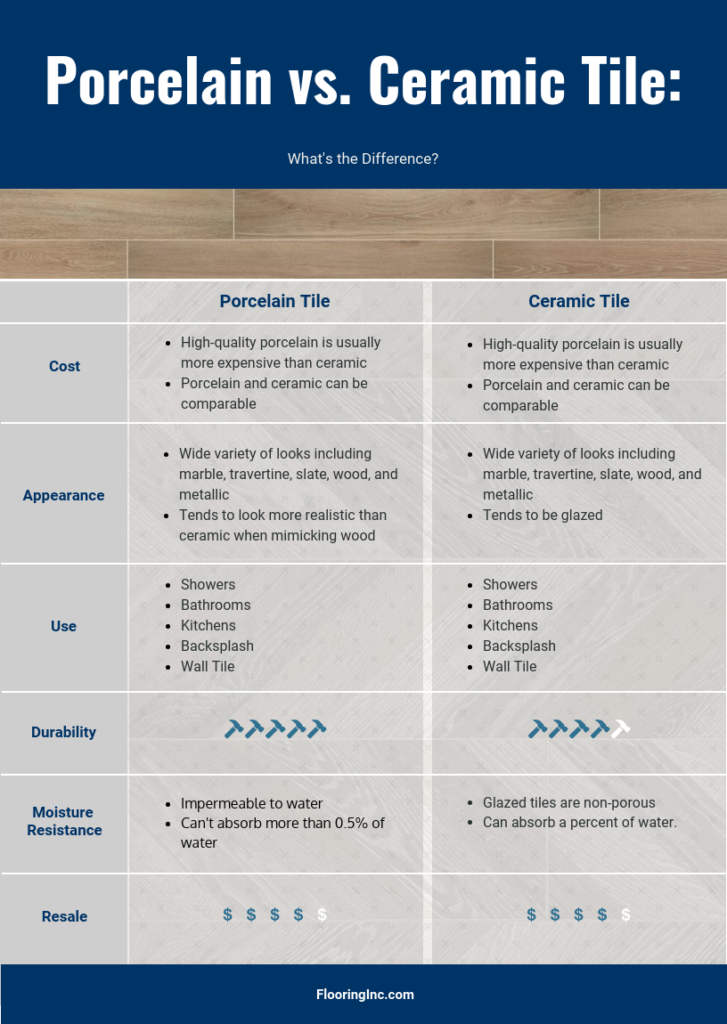
Appearance
Both ceramic and porcelain tiles offer a wide range of colors and looks. In this area, the two are fairly comparable.
Use
For the most part, porcelain and ceramic can be used in the same locations including bathrooms, kitchens, and as floor tile.
However, porcelain is impermeable to water and would be better suited for showers and bathtubs. Porcelain can also be used outdoors, whereas ceramic is not stable enough for that use.
Durability
Both porcelain and ceramic tiles are highly-durable in comparison to other flooring options. Porcelain comes out on top when it comes to comparing the two. Porcelain is denser and harder than ceramic and won’t chip as easily as ceramic tile.
Moisture Resistance
Though glazed ceramic tile is non-porous, the creation of porcelain tiles ensures that it’s completely impermeable to water. That’s why porcelain is common in areas where moisture is present.
Remember, for porcelain to be certified as porcelain, it can’t absorb more than a 0.5% of water.
Resale
Both ceramic and porcelain tiles would up your resale value over less durable materials like carpet or cheaper versions of laminate or vinyl. If you’re looking for a resale upgrade, both products would work well in your home!
SHOP CERAMIC TILES SHOP PORCELAIN TILES
Related Content >> How to Tile a Floor
Porcelain vs Ceramic Tiles FAQs
What does “body” mean and which one should I choose?
You will typically find 3 types of tile bodies to choose from.
- Body Match: This is what you’ll see in porcelain floor tiles where the body (inside) of the tile matches the glaze (outside). This becomes important if you ever chip your floor and can’t replace the tile immediately.
- Red Body: This is typical in traditional ceramic tiles. You will see a decorative top layer, but the inside of the tile maintains the red clay color. This is not typically a problem unless your tile becomes damaged.
- Double Loaded: Porcelain tiles can also go through a process known as doubling loading. In this process, extra design and textures are added to the top half of the tile. In this case, the top half of the tile does not match the bottom half. This often yields more appealing visuals but could be problematic if you get a deep gash or chip in your tile.
What type of finishes are available for ceramic and porcelain tiles?
- Glazed: The glaze is like the finishing touch to your tile. It works like a bodyguard to protect your tile from moisture and stains. Most ceramic tiles are glazed, but people sometimes prefer the natural, earthy look of unglazed tiles. Additionally, the glaze can cause these tiles to be more slippery when wet so we recommend using a textured tile if you plan to use a glazed tile in a bathroom or water-prone area.
- Polished: For a truly flawless surface, polished porcelain floor tiles are ground down to a high polish just like natural stones like marble and granite. A polished finish protects your tile from absorbing dirt and debris, offering you a sharper-looking floor with less maintenance.
- Unglazed: Unglazed ceramic tiles have no extra finish added after firing. They often look more earthy and natural than glazed ceramic tiles, but they are not quite as impervious to liquid or as easy to maintain. While these tiles can (and are) still used in rooms such as bathrooms and kitchens, they will require more maintenance than their safeguarded glazed counterparts.
What is a PEI Rating?
PEI is an abbreviation for the Porcelain Enamel Institute. This institute gives each tile product a rating based on the hardness of its glaze- this helps determine what uses are suitable for that tile. The ratings are as follows:
-
- NR: Natural Stone and other unglazed categories that are not rated.
- Group 1: Suitable for residential or commercial walls. Not suitable or recommended for foot traffic.
- Bathroom walls, backsplash, accent walls
-
- Group 2: Suitable for general light residential traffic.
- Bathrooms, formal rooms
- Group 2: Suitable for general light residential traffic.
-
- Group 3: Suitable for all residential and light commercial areas.
- Residential kitchens, commercial offices, reception areas, home uses
- Group 3: Suitable for all residential and light commercial areas.
-
- Group 4: Suitable for residential, medium commercial and light institutional applications.
- Restaurants, hotels, lobbies and commercial spaces with moderate traffic
- Group 4: Suitable for residential, medium commercial and light institutional applications.
-
- Group 5+: Suitable for heavy traffic in both residential and heavy commercial applications.
- Schools, airports, malls
- Group 5+: Suitable for heavy traffic in both residential and heavy commercial applications.
Related Content >> Tile Grout and Thinset Buying Guide
Is Porcelain Tile Slippery?
A slick, glossy porcelain tile will be more slippery than a textured tile. If you’re worried about slipping, especially when it comes to outdoor tile uses, we recommend having a more textured tile. In the bathroom, it’s a good idea to use non-slip pads in the shower and bath mats.
Is Tile Scratch Resistant?
Both ceramic and porcelain tiles are fairly scratch-resistant, though porcelain is moreso. Since it’s made from a denser material, you’re less likely to have scratches occur on porcelain tile.
SHOP CERAMIC TILES SHOP PORCELAIN TILES
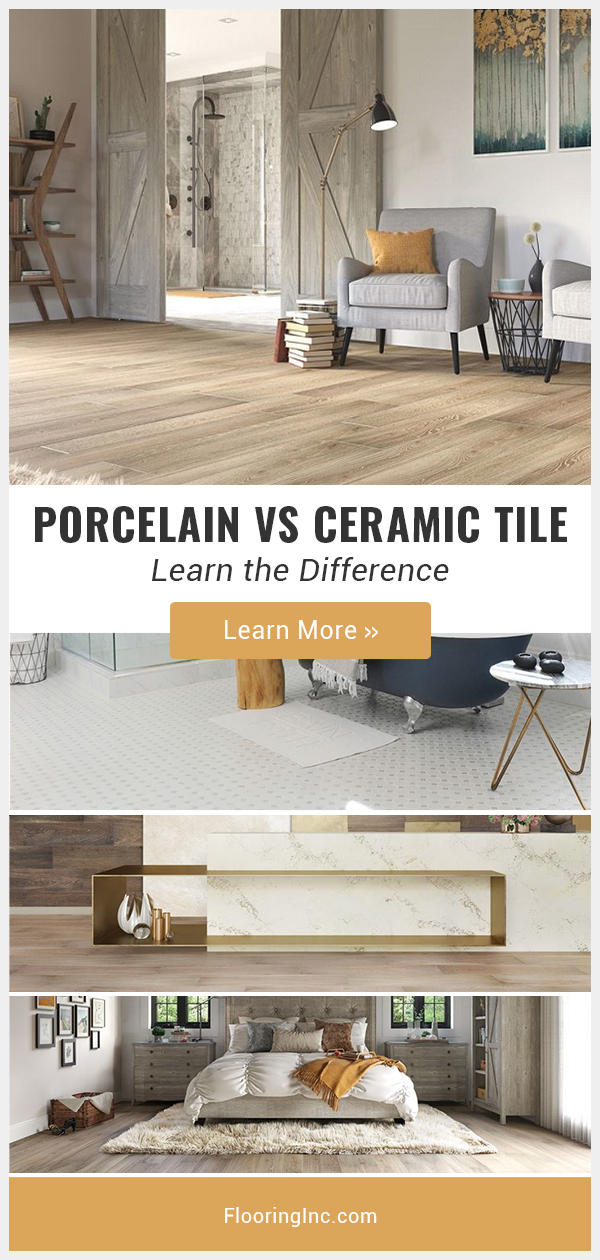

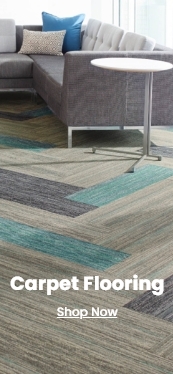
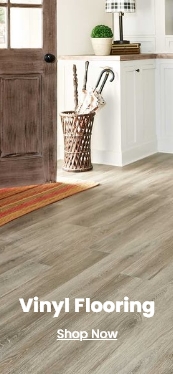



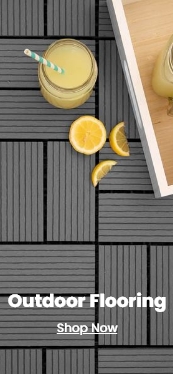
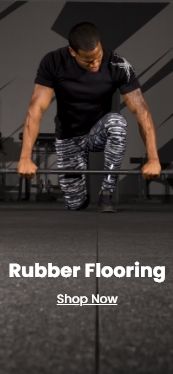
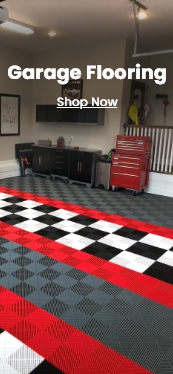
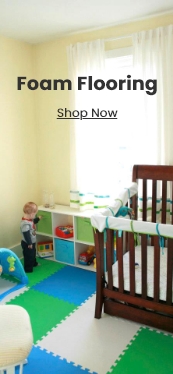

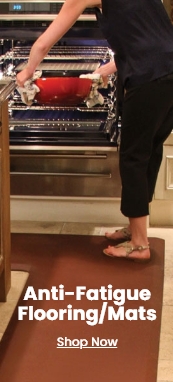

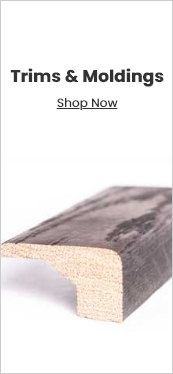
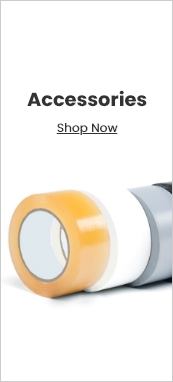

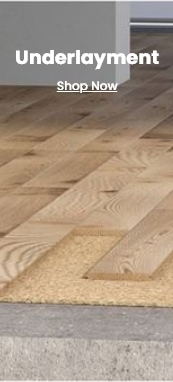

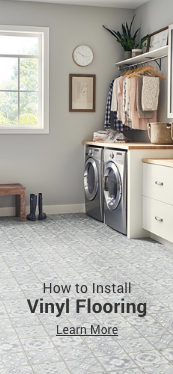
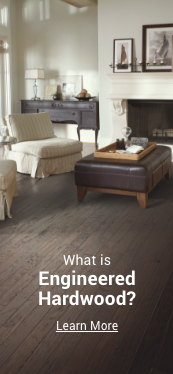
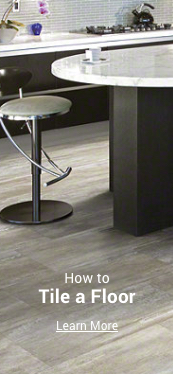
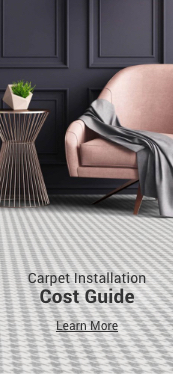
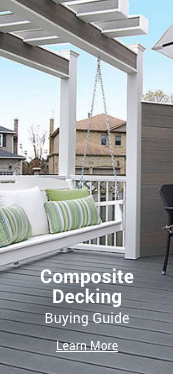


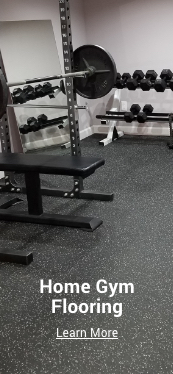
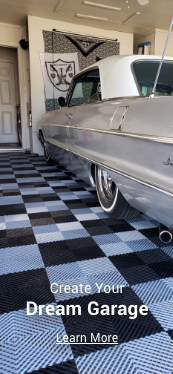
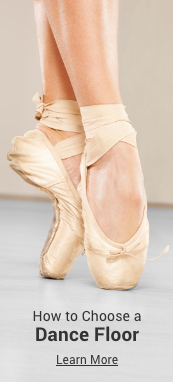
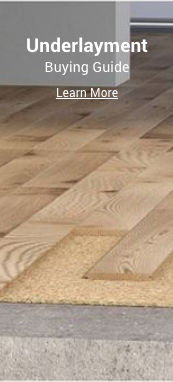


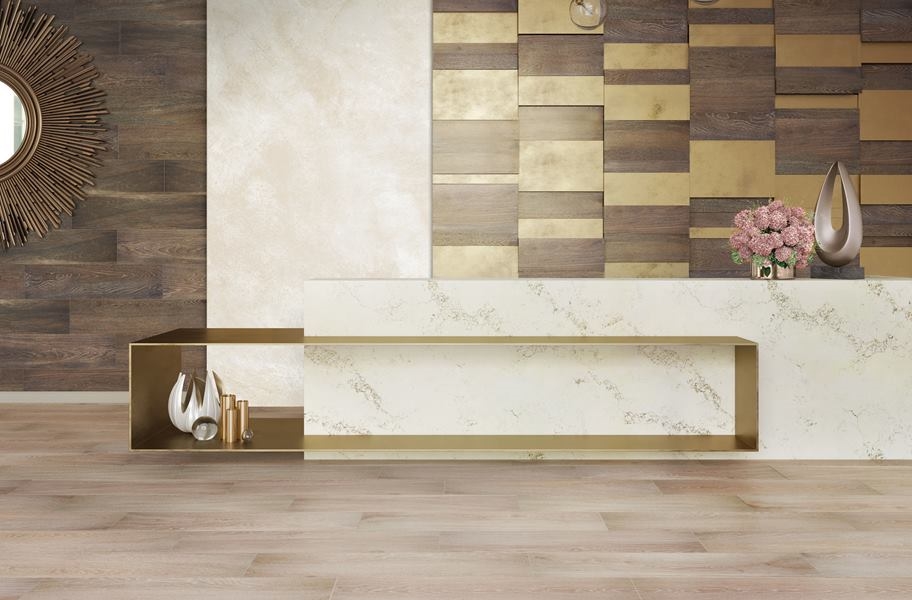
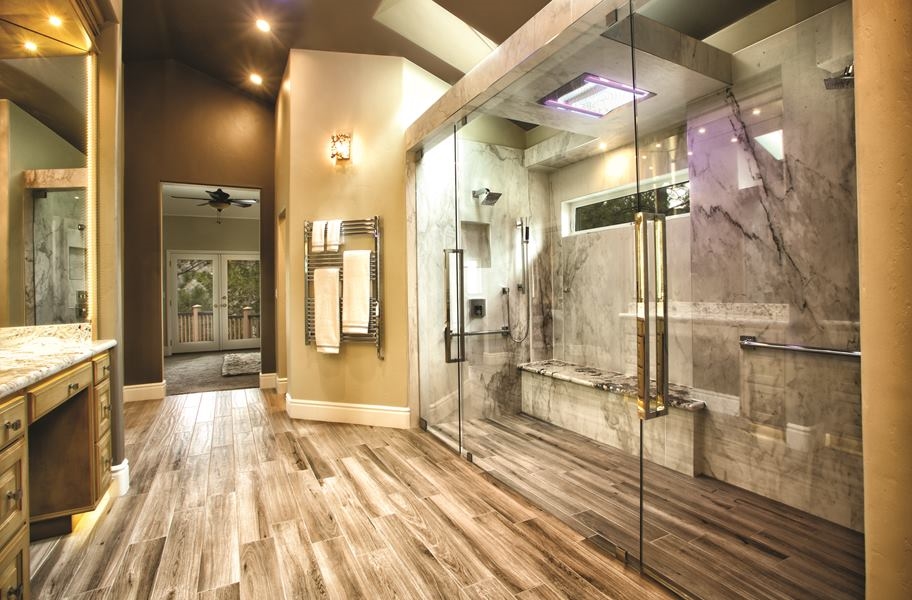
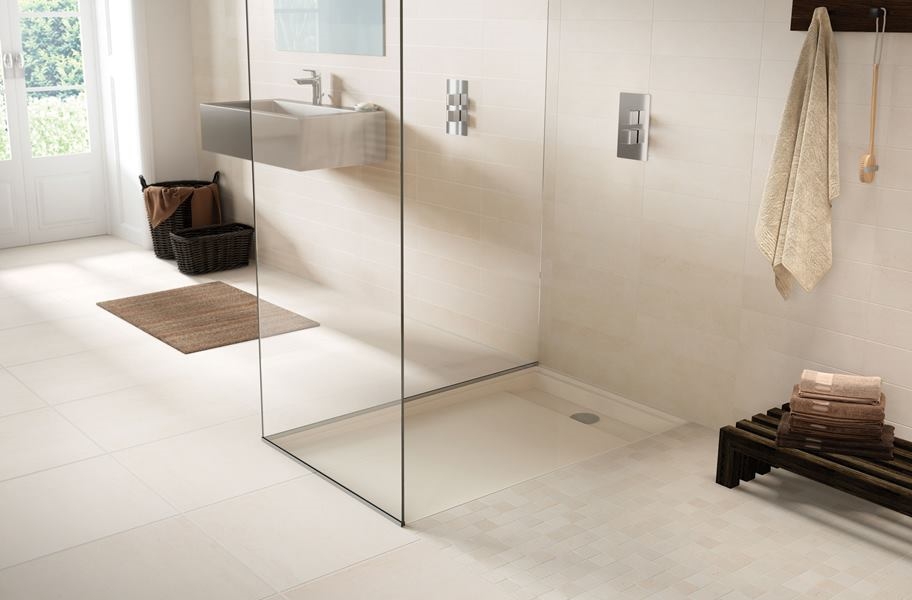
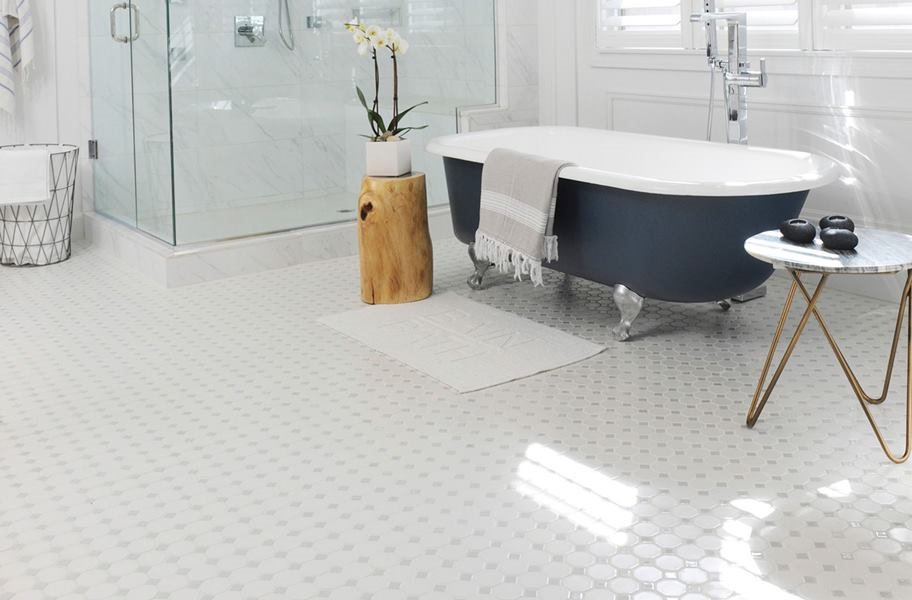
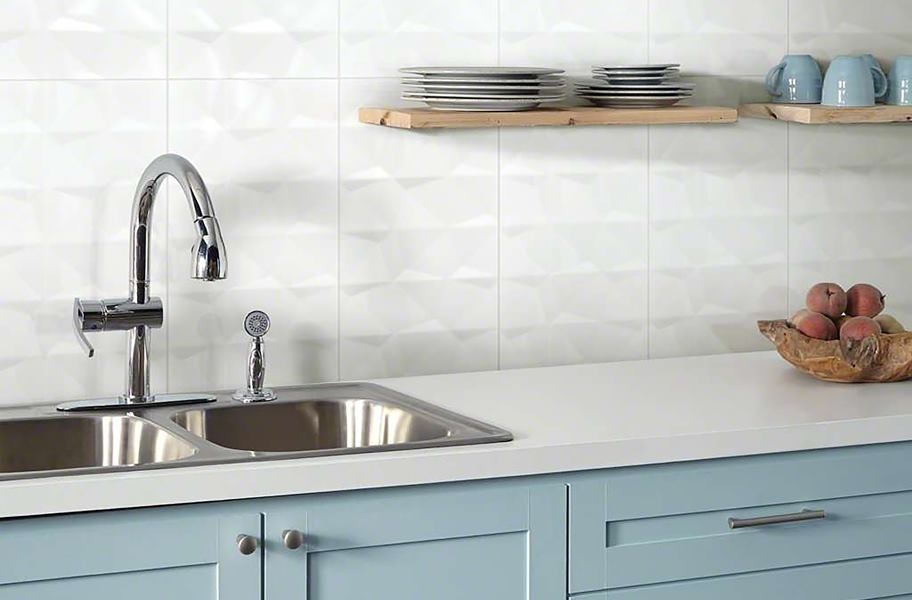



Pingback: 2017 Tile Flooring Trends: 18 Ideas for Contemporary Flooring - FlooringInc Blog